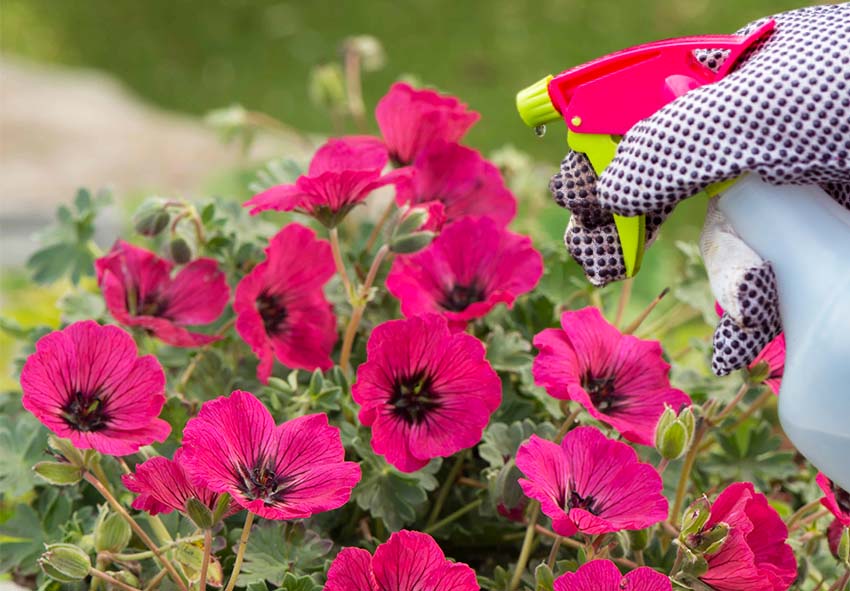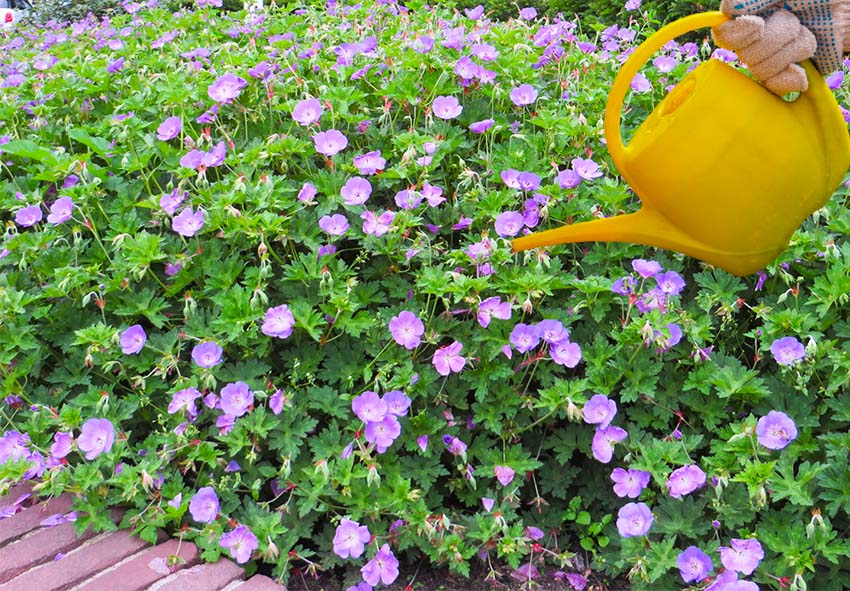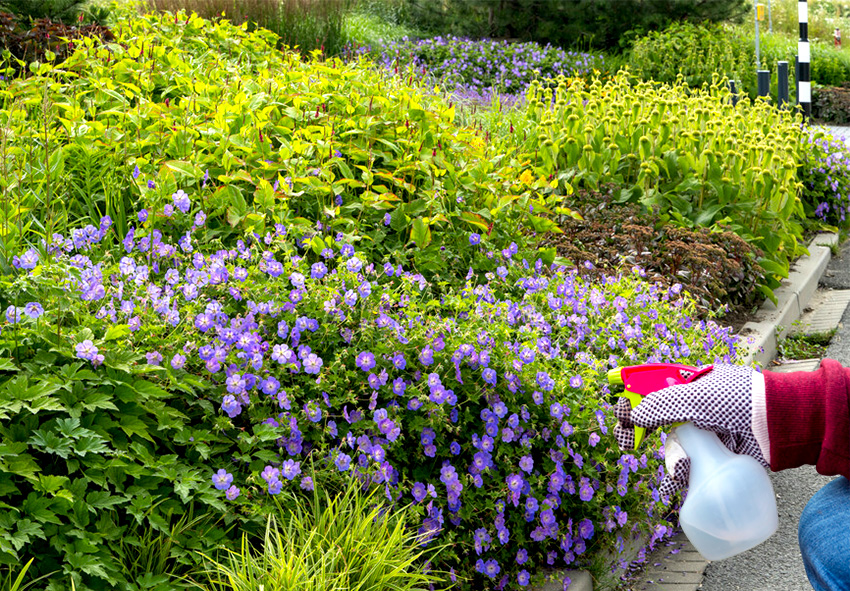Geraniums are a favorite among gardeners for their bright blooms, fragrant foliage, and resilience. However, like any popular plant, they can become a target for various garden pests. To keep your geraniums thriving and blooming beautifully, understanding proper pest control methods is essential. In this guide, we’ll explore the most common bugs that affect geraniums, how to identify them early, and both natural and chemical treatment options. Our gardening blog is a perfect place to find all the information you need!
Identifying Common Geranium Pests

Knowing your enemy is the first step in effective pest control. Geraniums are particularly attractive to several types of insects that can quickly compromise plant health if not addressed promptly. Here are the most common culprits:
Aphids
Aphids are tiny, soft-bodied insects that cluster on the stems and undersides of geranium leaves. They suck the plant’s sap, causing curled leaves and stunted growth. Aphid infestations often attract ants and leave behind a sticky residue called honeydew, which can lead to sooty mold.
Whiteflies
These small, white, moth-like insects are often found on the underside of leaves. Whiteflies feed on plant sap and weaken geraniums by causing yellowing, wilting, and leaf drop. When disturbed, they rise in a cloud-like swarm, making them easy to identify.
Spider Mites
Spider mites are nearly invisible to the naked eye but leave behind telltale signs: tiny yellow spots on leaves and delicate webbing between stems. These pests thrive in hot, dry conditions and can cause significant damage if not controlled early.
Caterpillars and Budworms
Geranium budworms are green caterpillars that chew holes in flowers and buds. They can destroy blooms before they open and are particularly damaging in summer. Regular inspection is key to spotting them before they cause extensive harm.
Mealybugs and Thrips
Mealybugs appear as white, cotton-like clusters on stems and leaves. Thrips are slender, fast-moving insects that leave silver streaks and black specks on foliage. Both pests suck plant juices, leading to distortion and discoloration of new growth.
Signs of Pest Damage on Geraniums
Even the healthiest geraniums can occasionally fall prey to pest infestations. Early detection is key to preventing widespread damage and maintaining vibrant blooms. Watch for these common signs that indicate your geraniums may be under attack:
- Curled or Distorted Leaves – Aphids and thrips often feed on new growth, causing leaves to curl, twist, or become misshapen.
- Sticky Residue (Honeydew) – A clear, sticky substance left behind by aphids or whiteflies, often followed by sooty mold.
- Yellowing or Dropping Leaves – Whiteflies, spider mites, or root-feeding pests can stress the plant, leading to yellow or wilted foliage.
- Holes in Leaves or Flowers – Caterpillars and budworms chew through buds and petals, leaving visible damage.
- Webbing on Foliage – Fine webs on leaves or stems are a sure sign of spider mite activity.
- Silver or Bronze Leaf Streaks – Thrips create streaks or speckled discoloration as they feed on plant tissues.
- Presence of Insects or Eggs – Visible bugs, larvae, or clusters of eggs on the underside of leaves signal an active infestation.
Prevention Strategies

Prevention is the most effective way to maintain healthy geraniums. Consistent care and smart gardening practices create an environment that deters pests naturally. For more helpful care tips after planting, check out our comprehensive guide for geranium.
Regular Plant Inspections
Check your geraniums weekly, especially during the growing season. Look under leaves and around flower buds for signs of pests or eggs. Early detection allows you to remove pests manually or apply treatments before damage becomes severe.
Proper Plant Spacing and Airflow
Crowded plants are more susceptible to pests and disease due to poor air circulation. Space your geraniums adequately to ensure each plant gets light and airflow. This discourages pest build-up and reduces humidity around the leaves.
Soil and Watering Practices
Healthy soil contributes to pest-resistant plants. Use well-draining soil and avoid overwatering, which can attract fungus gnats and root rot. Allow the top layer of soil to dry between watering to maintain a balanced moisture level.
Chemical Treatments (When Necessary)
While natural and preventive methods are preferred, some pest infestations may require chemical intervention — especially when damage is severe or spreading rapidly. Use chemical treatments responsibly and as a last resort, always following label instructions. Here are some effective options to consider:
- Insecticidal Soaps: These are mild and effective against soft-bodied pests like aphids and whiteflies. Spray directly on affected areas for best results.
- Neem Oil: A natural pesticide that disrupts insect growth and feeding. It’s useful against a wide range of pests and also has antifungal properties.
- Pyrethrin-Based Sprays: Derived from chrysanthemum flowers, these sprays are fast-acting against flying and chewing insects. Use with caution to avoid harming beneficial bugs.
- Systemic Insecticides: Absorbed by the plant, these target sap-sucking pests from the inside out. Best used for persistent infestations where topical treatments fail.
- Carbaryl or Permethrin: These are stronger chemical options for severe outbreaks. Always use them sparingly and wear protective gear when applying.
- Slug and Snail Pellets: For outdoor geraniums, these can help eliminate slug and snail infestations. Scatter them around the base of plants as directed.
- Rotate Chemicals: To avoid pest resistance, do not rely on the same chemical treatment repeatedly. Alternate products with different active ingredients.
Natural and Organic Pest Control Methods
If pests do appear, there are safe and effective methods to control them without resorting to harsh chemicals. These natural treatments are ideal for eco-conscious gardeners.
Neem Oil Spray
Neem oil is a natural insecticide that disrupts the life cycle of many pests. Mix it with water and spray directly onto affected areas. Reapply weekly for ongoing control and avoid spraying in intense sunlight to prevent leaf burn.
Insecticidal Soap
Insecticidal soap kills soft-bodied insects like aphids and whiteflies on contact. It is safe for geraniums and the environment when used properly. Apply it in the early morning or late afternoon and repeat as needed.
Companion Planting for Pest Repellence
Planting pest-repelling herbs and flowers nearby can help deter bugs naturally. Marigolds, basil, and lavender are excellent companions for geraniums. These plants emit scents that repel many common pests while enhancing garden diversity.
Recovery Tips for Pest-Damaged Geraniums

Once pests have been identified and managed, helping your geraniums recover is the next critical step. With proper care, most plants can bounce back from minor to moderate infestations. Use the following recovery tips to restore their health and vitality:
- Prune Damaged Leaves and Stems: Remove any severely affected or dead parts of the plant to promote new, healthy growth and reduce stress.
- Improve Air Circulation: Space out your geraniums or thin out dense foliage to reduce humidity and discourage future pest infestations.
- Apply a Balanced Fertilizer: Use a gentle, balanced fertilizer to support regrowth without overwhelming weakened roots or foliage.
- Water Consistently and Carefully: Avoid overwatering, but keep the soil evenly moist to help plants recover from stress. Water early in the day to prevent fungal issues.
- Mulch to Protect Roots: Add a light layer of organic mulch to conserve moisture and regulate soil temperature during recovery.
- Monitor Regularly: Keep an eye on your geraniums for any signs of recurring pest problems or slow recovery, and act quickly if issues reappear.
- Provide Adequate Light: Ensure your geraniums receive enough sunlight — ideally 6–8 hours daily — to support strong regrowth after pest damage.
Conclusion
Caring for geraniums includes being vigilant about pests that can damage their vibrant beauty. By identifying common bugs early, using preventative measures, and applying natural or chemical treatments when needed, you can keep your plants healthy and flourishing. Regular care and inspections are the keys to long-term success in geranium gardening!
Frequently Asked Questions (FAQs) about Pest Control for Geranium
1. How can I identify pest damage on my geraniums?
Pest damage can appear as yellowing or curling leaves, sticky residue (honeydew), holes in foliage, or stunted growth. You may also notice the pests themselves on the undersides of leaves. Early signs should prompt action to prevent the infestation from spreading.
2. Are natural pest control methods effective for geraniums?
Yes, natural methods like neem oil, insecticidal soap, and introducing beneficial insects like ladybugs can be very effective. These options are eco-friendly and less harmful to pollinators. They’re ideal for mild infestations and can be part of an integrated pest management approach.
3. When should I consider chemical treatments for pest control?
Chemical treatments should be used only when natural remedies fail or the infestation becomes severe. Products like systemic insecticides or pyrethrin-based sprays can provide fast relief, but must be used cautiously to avoid harming beneficial insects or your garden ecosystem.
4. Can I order dutch geraniums from your online store?
Yes, we offer a wide selection of geraniums, including some varieties originating from Holland, renowned for their quality and beauty. Our online store Dutch-bulbs.com features a diverse range of geranium. Explore our collection to find the perfect geranium varieties for your garden or landscaping projects.
5. How can I prevent pests from returning to my geraniums?
To prevent pests, keep your geraniums healthy with proper watering and spacing for airflow. Remove dead leaves regularly and inspect plants weekly. Companion planting and rotating treatments can also deter pests. Preventive care is the best long-term pest control strategy.
Published: 12.08.2025
